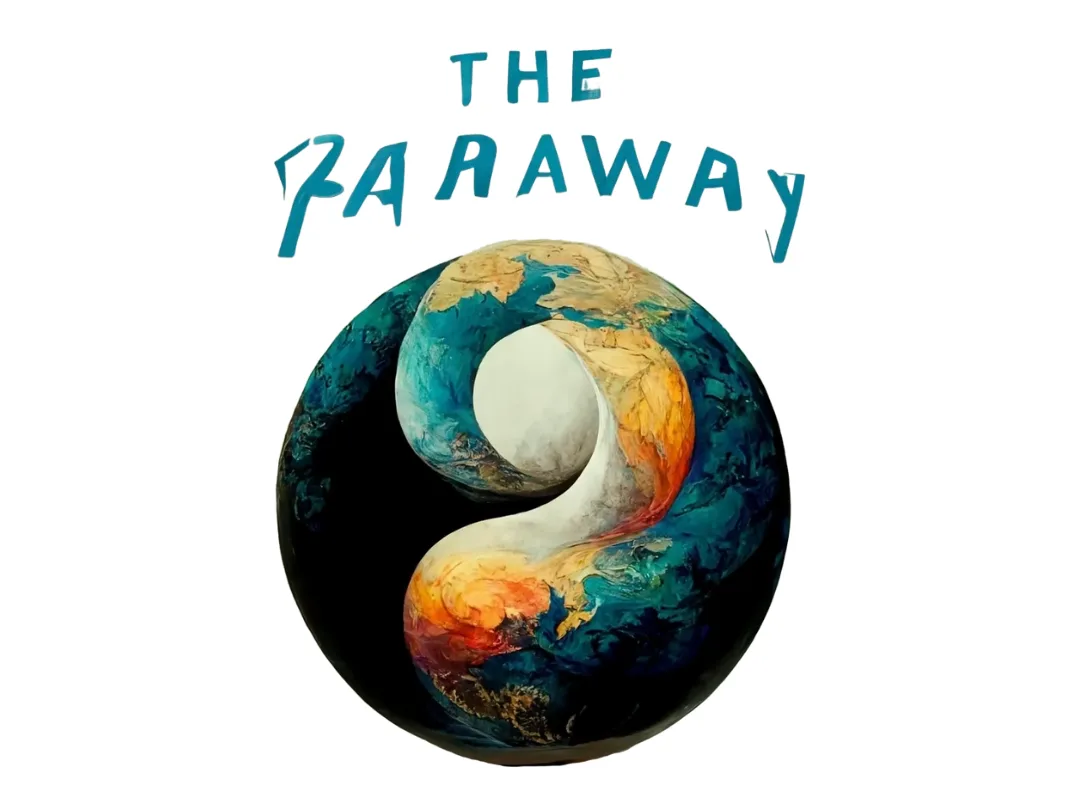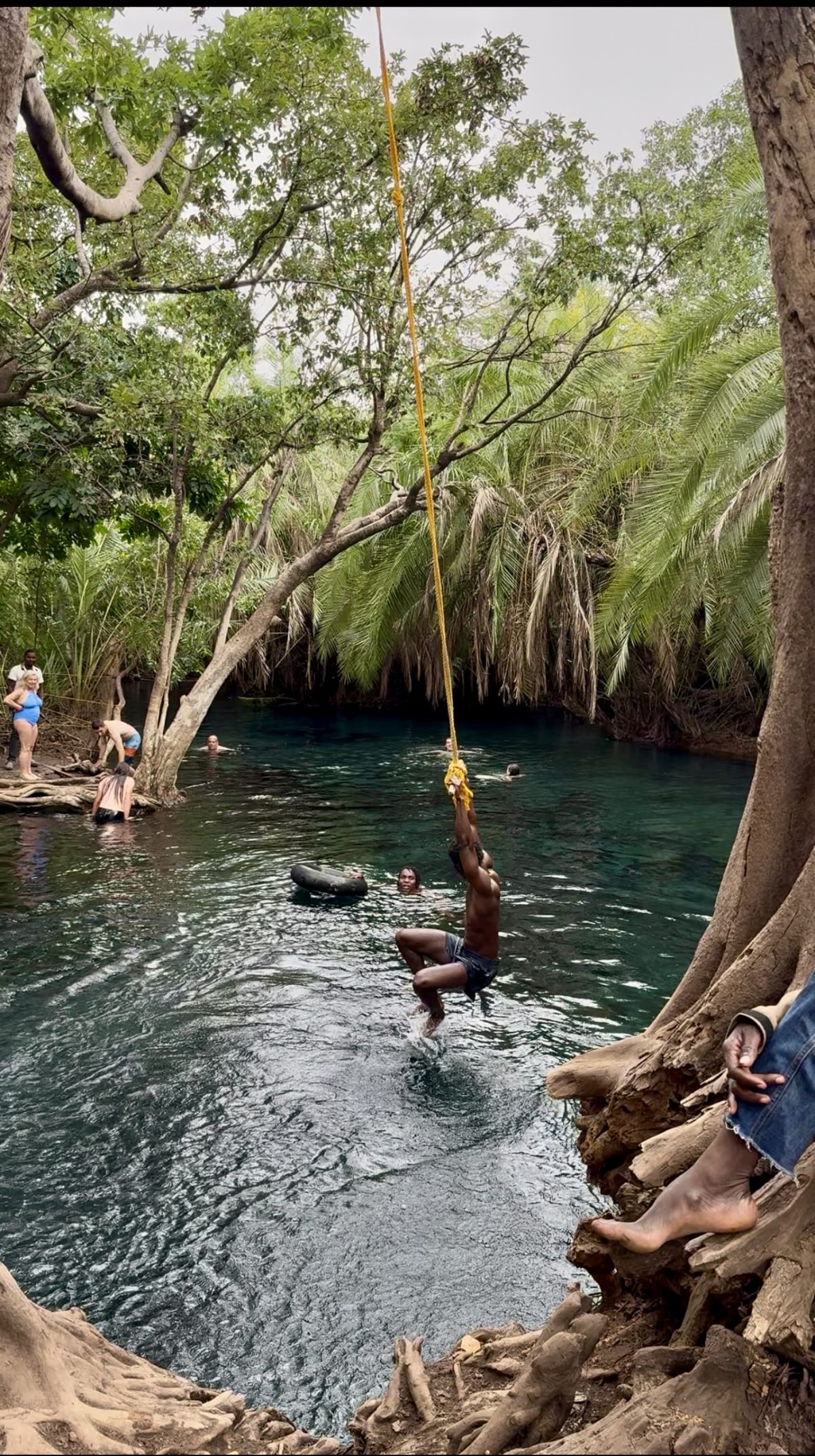The road dips, the air changes, and then you see it—“Welcome to the Geneva of Africa.”
That sign always makes me smile. After hours on the road from Nairobi—five hours of shifting landscapes, wide open skies, and little villages flashing by—you finally roll into Arusha.
It’s only my second time here, but I already know it won’t be my last. There’s just something about this place. The way Mount Meru sits in the background, the easy pace of the streets, and the feeling that adventure is literally around the corner.
By the time we arrived at our lodge, Nyumba Ndoto, I already knew this trip was going to be more about relaxing than exploring for me—because it was just so beautiful I wanted to soak it all in.
Why Arusha Stands Out

Tanzania is split into two main regions: the mainland and Zanzibar. This goes back to 1964 when Tanganyika merged with Zanzibar to form what we now know as Tanzania.
Most people hear “Tanzania” and immediately think of Dar es Salaam or the beaches of Zanzibar. But Arusha? Arusha is special. It’s the heart of Tanzania’s safari circuit—the place where so many adventures begin.
Most safaris in the northern circuit—think Serengeti, Ngorongoro Crater, Tarangire, and Lake Manyara—kick off right here in Arusha.
There are other starting points, of course:
- Some trips begin in Moshi if you’re pairing a safari with a Kilimanjaro trek.
- Others start in Dar es Salaam for the southern parks like Selous (now Nyerere) and Ruaha.
- A few high‑end fly‑in lodges even whisk you straight from Kilimanjaro Airport or Zanzibar.
But if you want the classic safari experience that puts you at the doorstep of those iconic northern parks? Arusha is where it all begins.
How to Get There




I’ve always done Arusha by road—it’s part of the charm for me. From Kenya, it’s an easy trip: roughly five hours from Nairobi or Mombasa.
If you’re flying in, the nearest airport is Kilimanjaro International Airport (JRO), about an hour’s drive from the city.

Planning Your Trip to Arusha
How Long Should You Stay?
A 5–7 day trip is ideal. It gives you enough time to enjoy the city, go on a safari, and squeeze in a couple of day trips.
Best Time to Visit Arusha
For Safari & The Great Migration:
- June to October is prime safari season in the northern circuit. The dry season means thinner vegetation, wildlife gathers around waterholes, and sightings are at their best.
- To catch The Great Migration, aim for July to early September when herds are typically crossing the Mara River between the Serengeti and Masai Mara. This timing can shift with rainfall, so confirm before you travel.
For Waterfalls (like Materuni):
- March to May (green season) is when waterfalls are at their most dramatic thanks to the rains. Trails can be muddy but the views are worth it.
- Outside of rainy months, waterfalls still flow but are gentler—perfect if you want an easier hike and drier paths.
For Hot Springs (like Kikuletwa):
- Great year‑round, as they’re fed by underground springs.
- Tip: Arrive early regardless of the season—the crowds build up quickly by late morning.
Checklist & Preparation Tips
- Yellow fever card (required at entry)
- Passport valid for at least 6 months
- Tanzania eVisa (apply online beforehand)
- Sunscreen, insect repellent, comfortable shoes
- Lightweight but modest clothing
- A power bank and universal adapter
- Swahili basics (“Asante” means thank you!)
Combine Arusha with Zanzibar
If you’re coming all the way to Tanzania, it’s worth combining your trip with a few days in Zanzibar. Arusha gives you adventure and wildlife, Zanzibar gives you rest and the Indian Ocean. Flights between the two take about an hour.
What Arusha Feels Like
The first thing you notice stepping out of the car after that long drive is the cool, crisp mountain air. It’s like your sinuses get a factory reset—you suddenly smell scents you’ve never smelled before.
Arusha has a calm rhythm that makes you feel like you can breathe. The pace isn’t frantic like Dar or Nairobi. You’ll see Mount Meru looming in the background, kids walking to school in uniform, and markets alive with color and sound.
The people are warm, the traffic isn’t chaotic, and the city feels safe enough to wander during the day. Don’t be surprised if a street vendor tries to sell you Maasai jewelry or handwoven baskets—that’s part of the charm.
Places We Visited & Things We Did
Kikuletwa Hot Springs
This was easily one of my favorite day trips. Kikuletwa Hot Springs is a natural, warm spring hidden between banana plantations. The drive is about 1.5 hours on bumpy dirt roads, but diving into those blue‑green waters under the palm trees makes it worth every bump.



Tips:
- Arrive very early—it gets crowded fast.
- You don’t need to be a strong swimmer. There are lifeguards, floating tubes, and shallow edges, but for your comfort, some basic swimming confidence helps.
Entry cost about $10, and we paid extra for transport from Arusha, which came to roughly $60 each.
Coffee Farm Tour
We spent a morning at a small coffee farm and learned the entire process of coffee making—picking the beans, roasting them over an open fire, grinding them by hand, and brewing a cup right there with the farmer walking us through every step.



The view from the farm was stunning: rolling hills, distant peaks, and that earthy, roasted coffee scent in the air. It’s an experience that makes you appreciate your morning cup so much more.
Shanga
Shanga was a surprisingly emotional stop for me. It’s an art center and social enterprise that employs Tanzanians with disabilities to create beautiful glassware, beaded jewelry, and fabrics.
What made this visit extra special was that we got to create our own necklaces alongside the artisans—no extra charge, just pure joy. (Do tip though; it’s appreciated and well deserved.) Watching them work and being invited into their process was honestly humbling.


We also tried our hand at glass‑blowing and spent time browsing their shop, which is full of pieces you won’t find anywhere else.
Cultural Heritage Centre
A must‑visit for high‑quality Tanzanian art and souvenirs. I bought hand‑carved pieces here, and while it’s pricier than street markets, the variety and setting are worth it.
- Entry: Free.
- Bonus: Great café—I had one of my best iced coffees here.
More Time? Try These
Materuni Waterfalls & Coffee Farm Tour
Just outside Moshi—a full‑day experience. Scenic hike past farms and birdsong, then the dramatic falls. Afterwards, we roasted and ground coffee beans by hand at a small farm.
Arusha National Park
Nestled at the base of Mount Meru, this park packs a lot into a small area—savannah, forests, and lakes. One of the few places in Tanzania where you can canoe on safari.
Meserani Snake Park
A short drive from Arusha. See pythons, cobras, and vipers up close, and visit the nearby Maasai museum. Entry fees support local medical programs.
Where to Eat and Drink


- The Blue Heron: Perfect lazy afternoon spot—wood‑fired pizza under the trees.
- Khan’s BBQ: A roadside grill with plastic chairs and smoky, unforgettable meat.
- George’s Tavern: Upscale, quiet dinner—my grilled tilapia with lemon butter was divine.
- Via Via: Evening vibe with live music, cocktails, and young travelers. Meals range from $5–15.
Traditional Food and Drinks to Try
- Nyama Choma: Grilled goat or beef with kachumbari—chunkier and smokier than suya.
- Ugali: A maize-based staple, like Nigerian swallows, served with soups or meats.
- Pilau: Fragrant rice cooked with spices and meat—don’t skip this.
- Chipsi Mayai: Pure Tanzanian street food—omelet with fries inside. Less than $1.
- Local Drinks: Sugarcane juice, spiced tea, Serengeti and Kilimanjaro beers.
(One day I’ll ask if there’s an East African version of the jollof wars, because with all these similarities… I’m curious!)
Cultural Experiences
- Maasai Boma Visit: Spend an afternoon with the Maasai—dancing, fire‑making, and stories.
- Banana Beer Brewing: Stomp bananas, add millet, and ferment. The beer might not be for everyone, but the experience is unforgettable.
Getting Around in Arusha
- Dala-dalas: Minibus taxis (500–1,000 TZS) — cheap but crowded.
- Bodabodas: Motorcycle taxis (wear a helmet!) — quick for markets and short trips.
- Taxis: Agree on the fare beforehand (5,000–10,000 TZS per short trip).
- Car rental or private driver: Best if you’re doing day trips or want comfort and flexibility.
Safety Tips
Arusha is generally safe, but:
- Don’t walk alone at night.
- Avoid flashing cash or valuables.
- Use registered taxis or trusted apps.
- Keep your passport secure.
- Always ask before photographing locals, especially Maasai.
Where to Stay
We stayed at Ndoto Ndogo, a cozy and artful guesthouse that felt like home.
Other options:
- Budget: Arusha Backpackers Hostel (~$15/night)
- Mid‑range: Venus Premier Hotel (~$40–50/night)
- Luxury: Gran Meliá Arusha (~$150–200/night) with Mount Meru views
If You Need Help
- Arusha Lutheran Medical Centre: Trusted for travelers.
- Tourist Police: Available in the city center and main attractions.
- Most hotels can help with emergencies or bookings.
Final Thoughts
Arusha is a place everyone should visit at least once in their life.
There’s so much packed into one trip: safaris, great food, kind people, and access to world wonders.
For me, Arusha gave me a taste of Tanzania I didn’t even know I needed—and I can’t wait to go back.
If it’s not yet on your list, I hope it is now.

